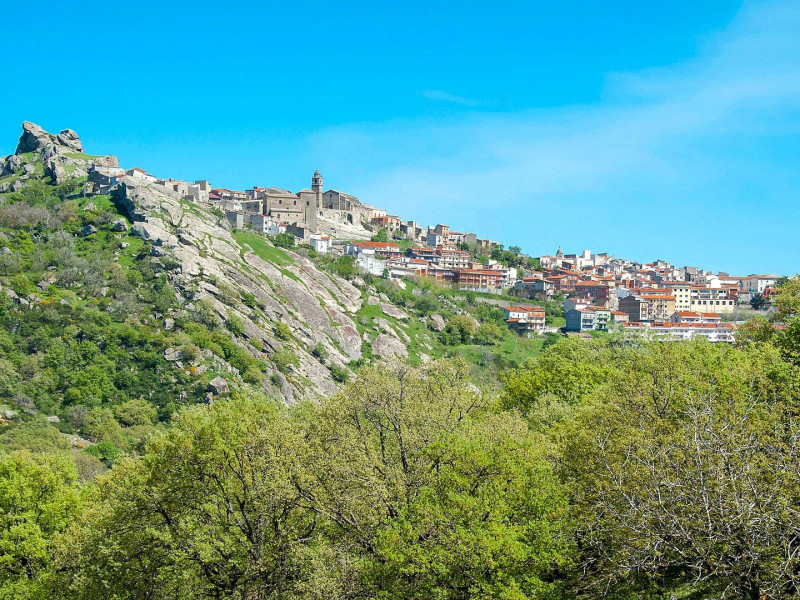Cerami
Cerami (Sicilian: Cirami) is a comune in Sicily, southern Italy, part of the Province of Enna. The town itself is perched on a mountaintop 1,000 metres (3,300 ft) above sea level. A river also named Cerami flows through this area. Cerami produces cereals, olives, grapes, and almonds. It also is known for cattle breeding and sheep herding. It holds a Cattle Fair during the month of August. History Cerami was founded by the Greeks as part of Magna Graecia in the fourth century BC. The name Cerami derives from the Greek term Keràmion, that means terracotta. The territory hosts several archeological areas, such as the Raffo district where remains of a Greek necropolis were discovered. A hilltop town, Cerami was the location of a major battle between Normans and Muslims in 1063, during the Norman conquest of the Island by Roger I of Sicily son of Tancred of Hauteville. According to historian Goffredo Malaterra, after being besieged in the neighboring town of Troina for four months, Roger and 136 ferocious Norman knights took to the field of Cerami and faced approximately 50,000 Muslim soldiers. The apparition of St. George was said to have materialized on a white horse carrying the sign of the cross on his lance and charging into the enemy where their array was the most dense. Malaterra claims the Normans slaughtered 35,000 of the enemy. According to English historian Edward Gibbon, even accounting for 5 or 6 men at arms accompanying each Norman knight into battle, and even accounting for the Normans' superior martial training, the victory was either miraculous or fabulous. Nevertheless, the Normans went on to capture the island. The current community rose approximately in the 11th century, and it belonged to the Count of Policastro, Simone d'Altavilla, and then to his son Manfredi. It was conquered by the Arnaldo family, and was subsequently bestowed to the Antiochia family, thus to the Manna noblemen. In 1336, the town was acquired by noblemen Rosso, who beheld it until the abolition of the feudal rights. During the Second World War, the hamlet briefly served as headquarters for the U.S. 1st Infantry Division as it prepared to assault German strongpoints located north and south of Troina. Main sights The most outstanding landmarks are the Chiesa Madre dedicated to Saint Ambrogio of the 16th century, preserving a statue of the Madonna col Bambino by Gagini, the gothic Church of the Madonna del Carmelo, and the baroque Church of the Abbey, that holds a Byzantine style painting of the Madonna. Citations

